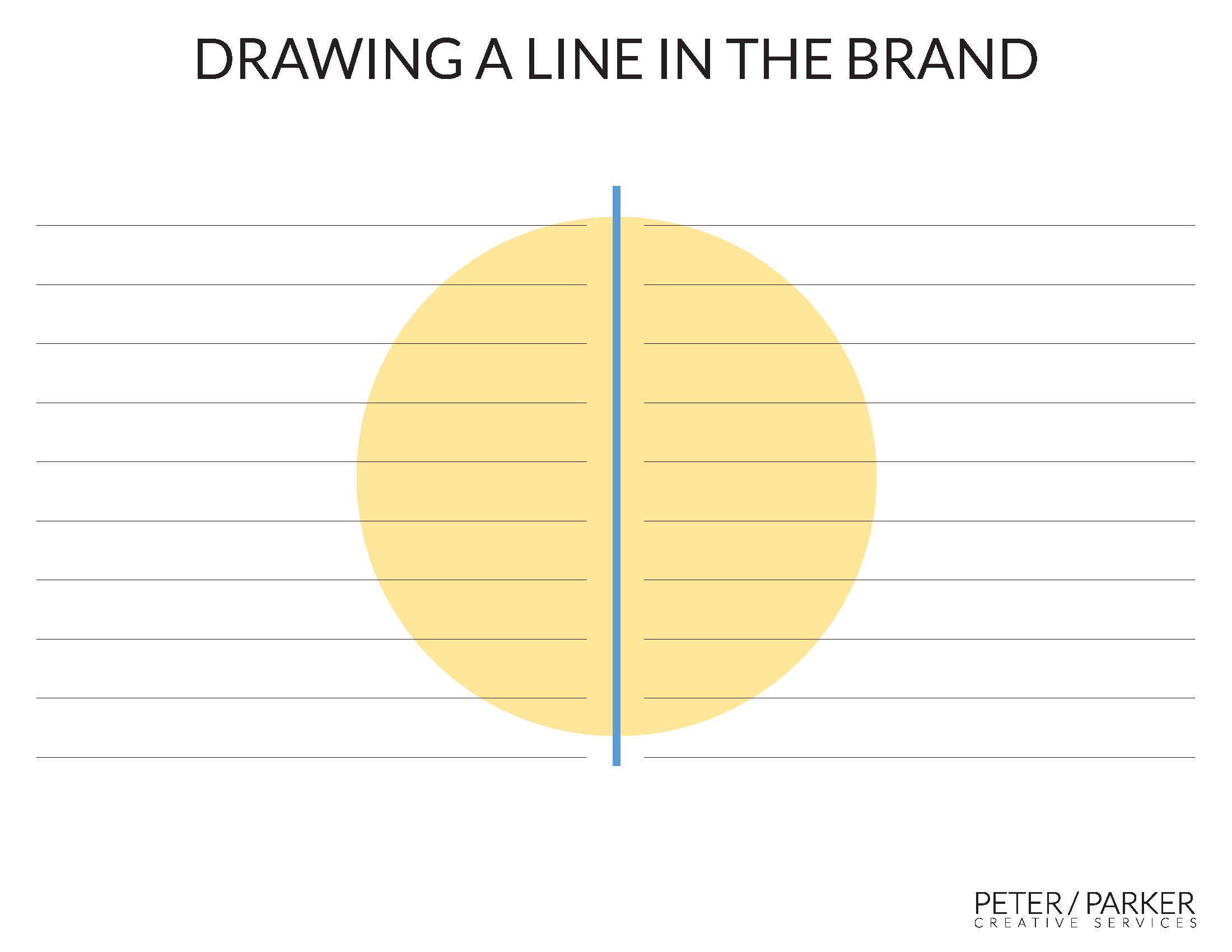Matthew Broderick was asked the generation-defining question, “Would you like to play a game” in 1983 and we have answered with a resounding “YES” ever since. And believe it or not, the workplace is ideal for playing games—no matter what that pesky HR director tells you. Of course, it’s the type of games you’re playing that matter. In the case of this article, we’re going to talk about games which can help you focus on your brand, your client, and your communication, and that just may save your business in the process. (OK listening to your HR director might help too.) Game on!
Drawing a Line in the Brand
Sometimes the best to find out what you are is to think about what you’re not. Here’s what you need to do:

Don’t feel like spending all that time drawing a line and a circle? Click the image and download our sheet.
- Draw a big circle. This is your sand—um—brand.
- Draw a line down the middle. This is your line.
- On the left of the line, write down all of the business practices you disapprove of, whether you’re doing them, your competitor is doing them, or you just know they exist. Consider advertising, company policies, and anything else that’s on your mind.
- On the right side of the line, write down the opposite of everything you just listed, no matter what that is.
- Now examine your answers. Are you doing everything on the right? If not, you have a to-do list and you need to get crackin’. If you are, good for you! Your brand is in line with what you expect it to be.
This is a great exercise to do alone or with a group. We recently did this with a group of 25 attorneys at their retreat and noticed that many answers were the same, which is good because it means they share the same principles. But the advantage to having so many people work on the activity is that it brought up a lot of unique answers too. Give it a try and see what you come up with.
Identify and Address the Client
OK not all of these games are going to have cool names. But here’s what you do:
- Separate your teams into groups if you have enough people for that.
- Have them come up with an imaginary client or customer that represents their normal clients/customers.
- Make a list describing him or her. They should describe everything from looks to personality to habits and life.
- Now, thinking of advertising, write down what graphics these clients respond to, what tone they need to be addressed in, what value they derive from working with you, and how the total experience with you makes them feel.
- Have representatives from each group get up and present their client/customer and the other details.
This is an exercise to help you and your team really connect with who you provide services for, while also helping you craft messages for the dossiers that your team created. You’ll leave this exercise with clear visions of customers to address with your marketing messages and you’ll know exactly what motivates them and how they’re going to respond to you.
You Want Me To Do What Now?
My old mentor David Riddell led this exercise and it’s one of the best I think I’ve ever done. He grouped my peers and I into teams of 2 and sat us back-to-back. In our group, I was given a picture similar to the lighthouse image you see below. My partner was given a pencil and a piece of paper.
I had to tell my partner how to draw this image without saying any words that would tell them what was actually in the picture. So no “lighthouse”, no “water”, no “sounds like brighthouse” or anything like that. At first it seemed like an impossible task. Then I thought, let’s get literal and I started dictating instructions like this:
1. Make sure your paper is horizontal.
2. Place your pencil 20% from the right and 10% from the top edge.
3.Now draw a triangle about 1 inch tall.
I went on like this for the 2 minutes we were given and by the time it was over, my partner had the lighthouse and the horizon drawn pretty completely. The point of the exercise was to challenge our communication. As leaders we often think we’re explaining something to our team but what’s coming out of our mouths isn’t always what’s in our heads. Knowing that my partner had no idea what was in my hand, I had to get literal and I had to explain it carefully. It really taught me to interact and teach my team with more clarity. This game is a must for anyone in a leadership role.
What other games have you played that helped you be a better marketer or business person? Tell us. We want to play a game!








